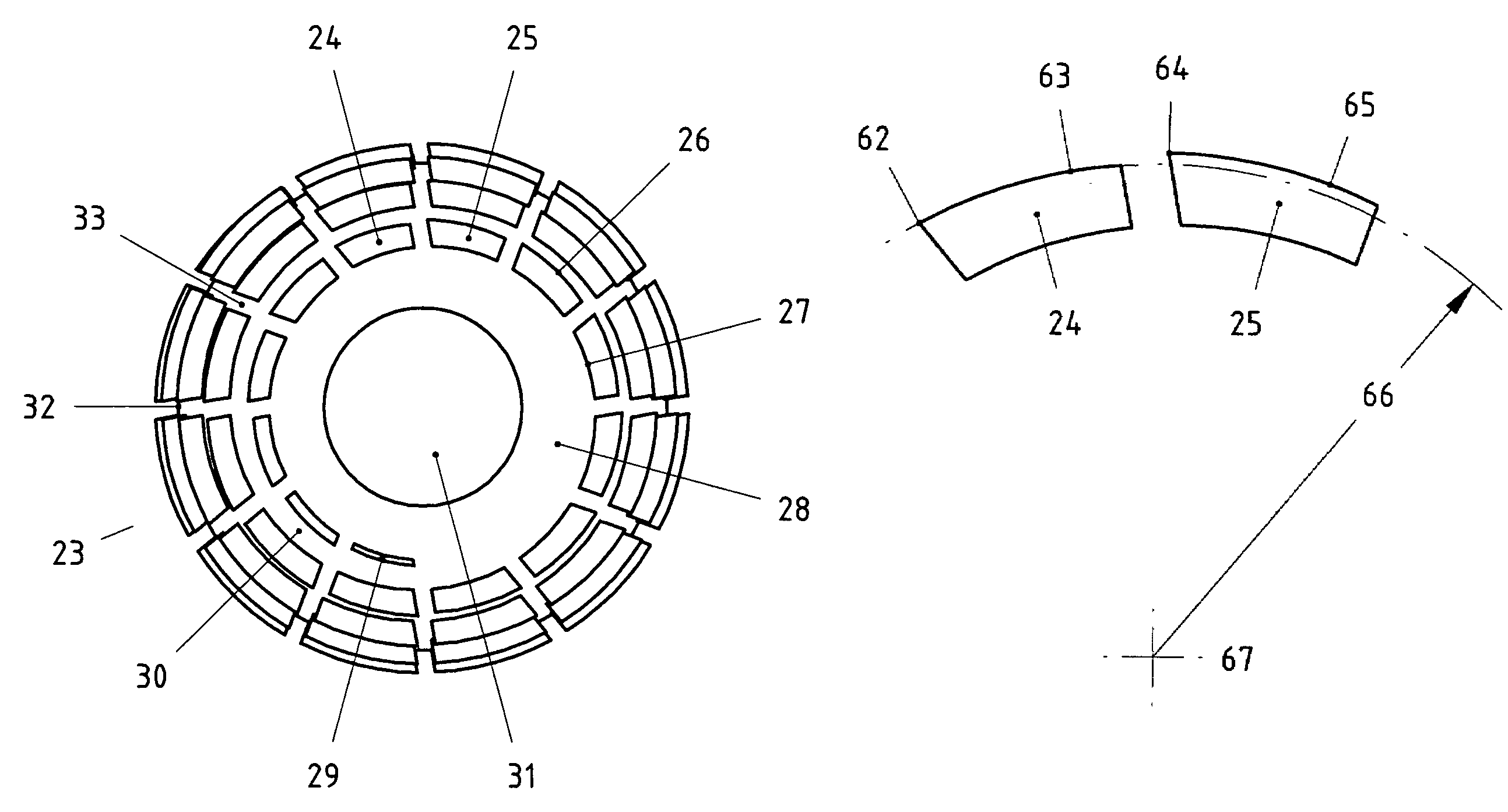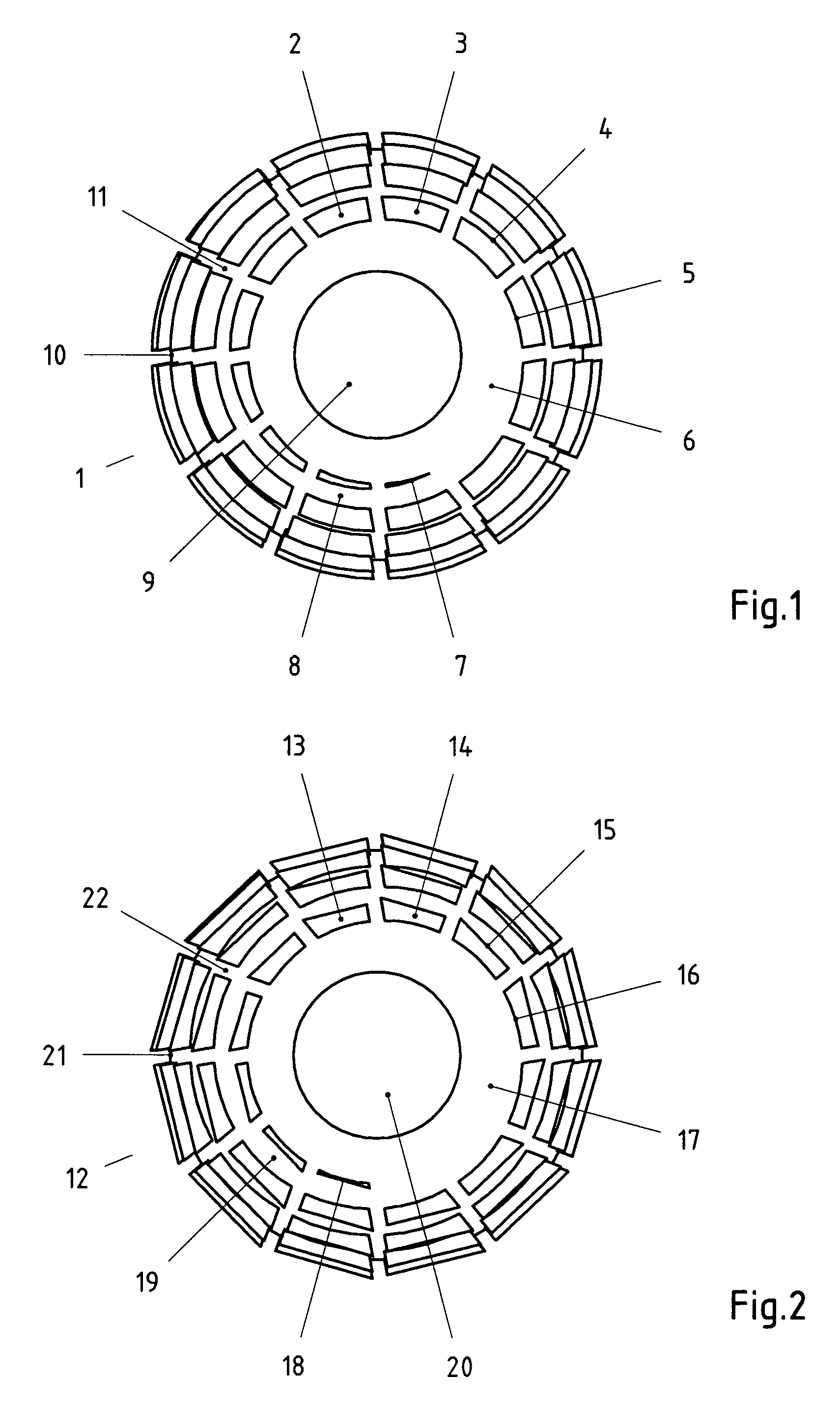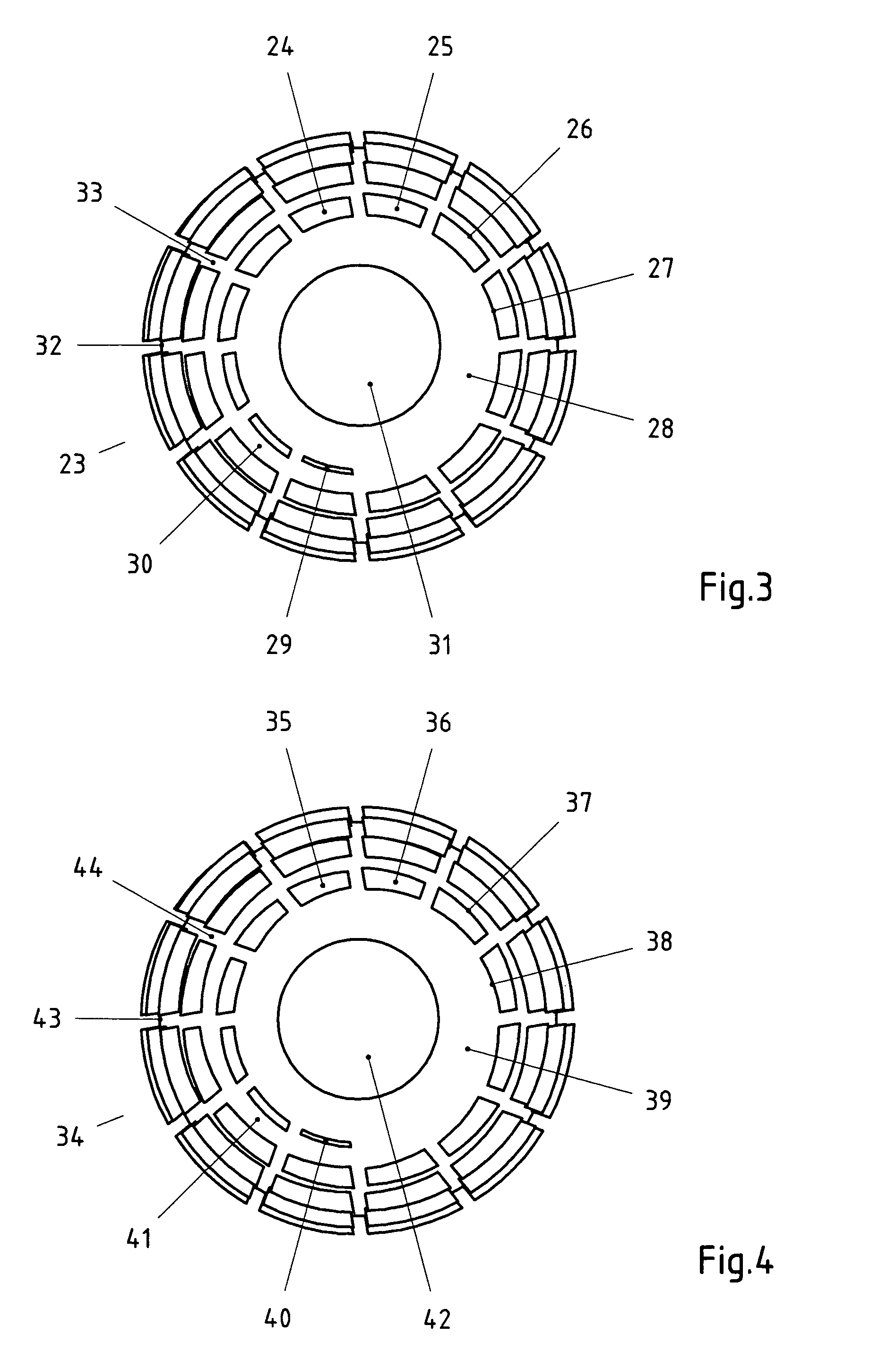Hobble turning method and preferred applications for said method
a turning method and rotary technology, applied in the direction of turning apparatus, geometric arrangement, programme control, etc., can solve the problems of affecting the accuracy of the turning method, the difficulty of adjusting the rotary speed, so as to achieve the effect of reducing costs and ensuring accuracy
- Summary
- Abstract
- Description
- Claims
- Application Information
AI Technical Summary
Benefits of technology
Problems solved by technology
Method used
Image
Examples
Embodiment Construction
[0063]The drawing in FIG. 1 presents the pole-side view of a hemispherical screw-in type artificial hip joint socket 1 with a flat thread according to state-of-the-art based on an example with a 1.3 magnification. In the example the nominal diameter is 54 mm, the average tooth height is 2.6 mm, the pitch is 5 mm and the bottom hole diameter is 22 mm. These basic dimensions were selected for technical drawing reasons and are also retained in drawing FIGS. 2 through 4 to allow better comparability. Similarly, the windup angle of the tapping groove(s) has been set at 0° throughout in order to reduce the drawing work. It is known that a woundup tapping groove(s) offers advantages with respect to a more favorable cutting angle and a more evenly distributed transfer of forces.
[0064]A dome shaped thread-free area 6 on the shell body continues from the bottom hole 9 of the screw-in type artificial hip joint socket 1. In the drawing the diameter of the shell body is represented by the equato...
PUM
| Property | Measurement | Unit |
|---|---|---|
| diameter | aaaaa | aaaaa |
| diameter | aaaaa | aaaaa |
| height | aaaaa | aaaaa |
Abstract
Description
Claims
Application Information
 Login to View More
Login to View More - R&D
- Intellectual Property
- Life Sciences
- Materials
- Tech Scout
- Unparalleled Data Quality
- Higher Quality Content
- 60% Fewer Hallucinations
Browse by: Latest US Patents, China's latest patents, Technical Efficacy Thesaurus, Application Domain, Technology Topic, Popular Technical Reports.
© 2025 PatSnap. All rights reserved.Legal|Privacy policy|Modern Slavery Act Transparency Statement|Sitemap|About US| Contact US: help@patsnap.com



